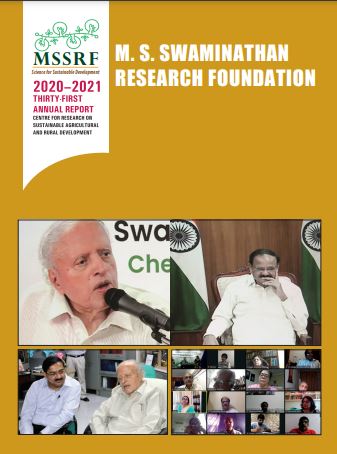These underappreciated plants play a vital role in the management of fishery resources and in carbon sequestration.
Under the cool, salty waters of Pulicat Lake, Tirupati, Andhra Pradesh lives a thriving ecosystem. The lake is home to several species of fish, prawns, birds, and last but not least – seagrasses. These small, unassuming plants may be overlooked by most, but they are a cornerstone of Pulicat’s ecosystems, and a valuable tool in our fight against climate change.
“Seagrasses provide lots of nutrients for fishery resources, as well as a space for the fishes to hide from predators, and lay eggs,” explained Dr Ramasubramanian, Senior Fellow – Coastal Systems Research at the M S Swaminathan Research Foundation (MSSRF). The presence of seagrasses not only increases fishermen’s catches, but is also an indicator of a healthy and thriving ecosystem.
Beyond their ecological significance, seagrasses sequester or store a significant amount of carbon. “Seagrasses store almost three to four times the carbon stored by terrestrial trees,” clarified Dr Ramasubramanian. In our struggle against global warming, seagrasses emerge as invaluable tools, quietly and efficiently locking away significant carbon reserves beneath the lake’s waters.
Today, Pulicat Lake’s seagrasses face many threats. Trawl fishing has degraded the grasses in many places, as fishing nets often catch onto and pull out the seagrasses. Global warming and the resulting rise in temperature and salinity affects these plants. They are fragile and are unable to adapt to the rapidly changing environment.
MSSRF’s restoration efforts at Pulicat
With the help of GIS and Remote Sensing (RS) technology, the MSSRF is helping to restore these essential plants at Pulicat.
“The first step is to identify potential restoration zones – this is done with the help of RS and underwater cameras with Global Positioning System (GPS). This information is then overlaid onto satellite images,” explained Mr Nagarajan, Head of GIS and Remote Sensing at MSSRF.
Dr Ramasubramanian shed light on the restoration process, describing how bamboo frames with seagrass tied to coir ropes are placed on the lake floor in degraded areas. In a few days, similar to the transplantation of paddy, the seagrasses start growing on the lake floor. This simple but effective method has helped restore the balance of Pulicat’s ecosystems, and increase the fisherman’s catches.
With every patch of seagrass restored at Pulicat Lake, more animals thrive. For every frame placed on the lake floor, a little more carbon is locked away. The delicate balance of the lake’s ecosystems is restored, bit by bit. By focusing on these underappreciated champions, the restoration efforts at Pulicat Lake have saved the lake’s seagrasses, and the lives dependent on them.
To learn more about our work on this project, click https://tinyurl.com/2s3b6krj
Edited by: Ms Sangeetha Rajeesh
With inputs from Dr Ramasubramanian R, Senior Fellow – Coastal Research Systems and Mr Nagarajan R, Head – GIS & Remote Sensing
Photo credits: Coastal Systems Research Team

